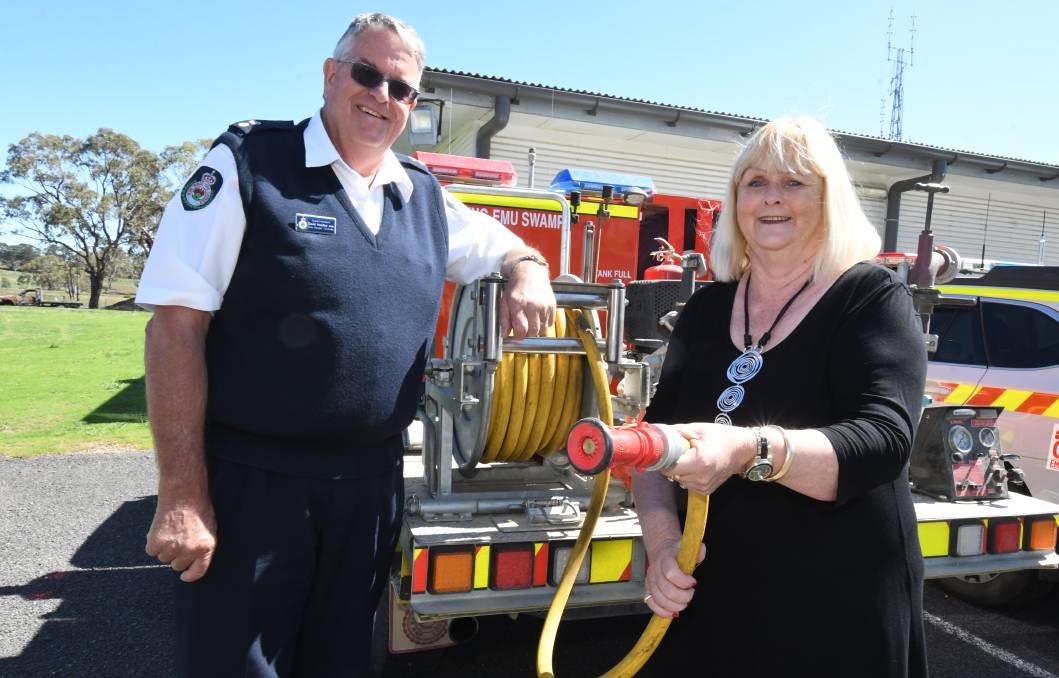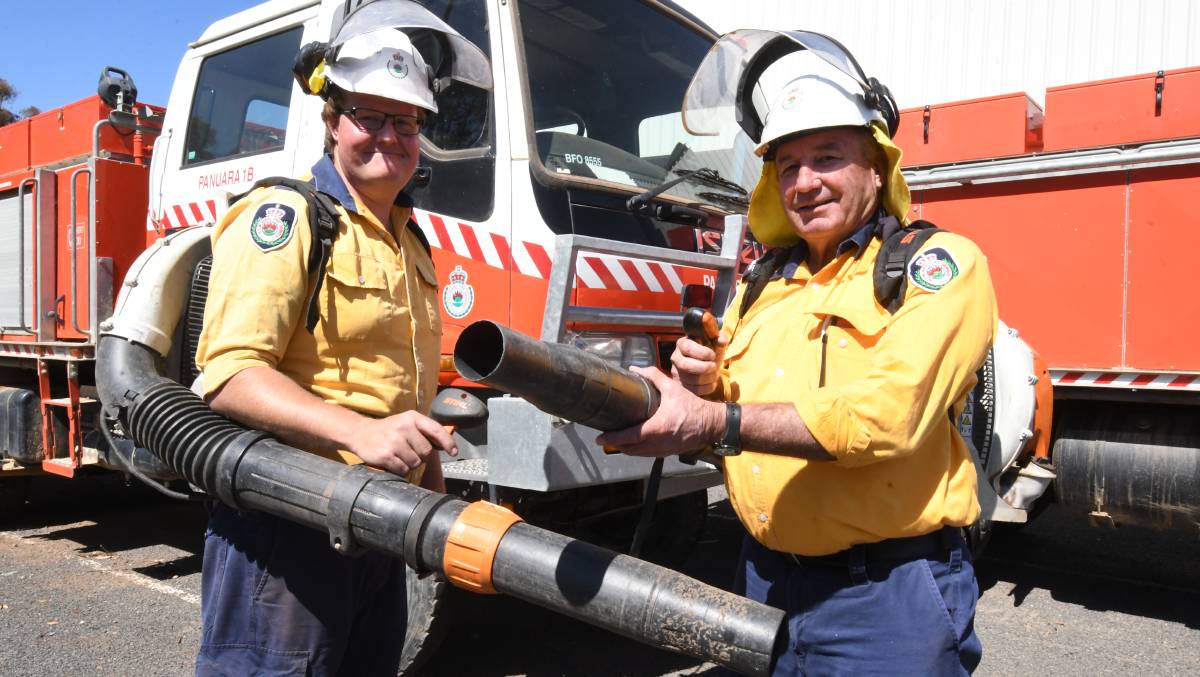Rural Fire Service Canobolas Zone to purchase air blowers for fighting fires
Published Date: 28 Feb 2020
Summary
Firefighters from across the Canobolas Zone of the Rural Fire Service will be able to undertake waterless firefighting tactics following a recent fundraising art auction.
The RFS is planning to purchase high-powered air blowers for each of its brigades in the zone with funds that were raised by an Orange Art Society auction on Saturday.
Auction media liaison Jan Savage said about $12,500 was raised through the sale of artworks, and with money still being processed she hoped the total would climb to $14,000.
 FIRE FUNDING: Canobolas Zone manager Superintendent David Hoadley and art auction media liaison Jan Savage. Photo: JUDE KEOGH
FIRE FUNDING: Canobolas Zone manager Superintendent David Hoadley and art auction media liaison Jan Savage. Photo: JUDE KEOGH
Mrs Savage said the society wanted to raise money for the RFS following the recent bushfires and the Canobolas Zone requested the money to be spent on the leaf-blower style machines.
She said there were 122 art works, with some selling in a presale, and there were 136 total sales with the most expensive item being an artwork by Ted Lewis that sold for $1100.
Mrs Savage said that as well as individuals the Orange Art Gallery had been interested in purchasing a painting for its collection and Cancer Care Western NSW had $850 to purchase three artworks for Cancer Care Lodge.
There were about 20 donated artworks that did not sell at the auction and they remain available for sale until Saturday with proceeds still going to the RFS.
The blowers were already in use by the fire mitigation crew, that conducts hazard reduction work for the RFS.
Mitigation crew leader Kieran Scouller and crew member Harold Rossiter said the RFS used the blowers, which cost about $800 to $1000 each, to remove litter and debris from a fire front.
Mr Rossiter said the machines could blow out a small fire and they could blow away sticks, dry grass and leaves to clear an area so a fire would burn to nothing.

FIRE CONTROL: Mitigation crew leader Kieran Scouller and crew member Harold Rossiter with air blowers. Photo: JUDE KEOGH
He said an area could be blown to bare ground creating a fire break or to prevent fire reaching a tree so they were useful during hazard reduction burns and for using around homes to remove debris that could be ignited during an ember attack.
Mr Scouller said fires were not often at fire trails, where fire trucks go so if the flames were small it was quicker to get to the fire with a blower than trying to run a hose down.
"If it's only a foot high flame you can come along with one of these and blow it away," Mr Scouller said.
"In our truck we carry no water but we've put out fires with this."
During the recent bushfires the air blowers were effectively used in the Mudgee area.
Canobolas Zone manager Superintendent David Hoadley said the RFS would purchase as many blowers as it could for the 80 brigades within the 13,000 square-kilometre zone, which covers the Orange, Cabonne, Blayney and Cowra shires.
"One hundred and fifty four are required so that every truck has one," Mr Hoadley said.
"There might be one or two that have bought them themselves.
"When [the Orange Art Society] approached us with the possibility of raising money for our area, the item of equipment we thought was of most value to our volunteers was this equipment."
Mr Hoadley said there were 752 members from the Canobolas Zone who helped fight the 2019/20 bushfires and with some people going multiple times there were about 18,000 deployments totalling 923 days and 174 tanker teams.
He said for 26 days four to six trucks per day, with their crews, travelled to fight the fire at Mudgee and travelled there and back each day.
Within the Canobolas zone he said crews had responded to 469 jobs within the financial year and by June he expected that to climb to 600,
"There were a couple of bush and grass fires, I don't think we've had one over 10 hectares so our crews are doing a great job," Mr Hoadley said.



